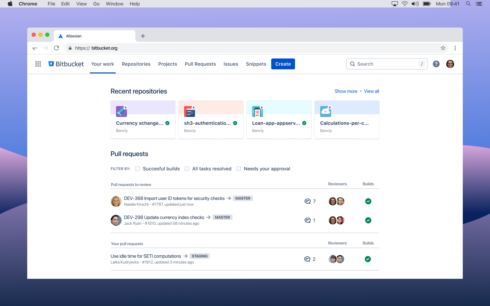
Atlassian wants to improve the way development, IT operations and business teams work together by allowing them to share and get the right information in the tools they are already working in.
In a recent DevOps Trends Survey, the company found that DevOps tools and practices teams use to make their lives easier actually come with new challenges such as disconnected tools, manual processes and collaboration blockers.
RELATED CONTENT:
Creating a DevOps culture
DevTestOps Landscape Survey 2020
Report: DevOps needs to undergo a human transformation
“Teams often spend a lot of time inside tools doing coordination, status updates and tool configuration instead of getting back to the core benefits,” Suzie Prince, head of product for Bitbucket Cloud at Atlassian, told SD Times. “The best teams collaborate and have a shared understanding, and that’s how you respond best to your business needs.”
To provide better collaboration and a shared understanding amongst DevOps teams, the company is announcing 12 new features and integrations focused on bringing teams back to “collaboration, coding and building secure software instead of all this kind of coordination work,” Prince explained.
The new features follow the value chain through planning, tracking, building, continuous integration and deployment.
For planning and tracking, one key feature is the introduction of the “Your Work” dashboard in Bitbucket Cloud. The dashboard has been expanded to include assigned Jira issues that allow teams to move from one task to the next within the dashboard instead of having to jump around between tools. According to Prince, one of the major blockers the company sees is that developers have to look in multiple places to find work or update status.
Atlassian is also releasing a new code review experience to enable developers to easily identify changes, and create action items in one place with automation. The new DevOps Automation Triggers can automate low-level tasks like updating Slack or Twitter channels so teams can manually focus on more high-level tasks like features with high risk or high value.
For review, test and deployment phases, Atlassian released a new pull request experience for Bitbucket Cloud that enables faster code reviews with consolidated lists of tasks, integrated Jira issue creation, and activity feed filters.
The new Atlassian VS Code Integration aims to bring the development pipeline into developers’ editors with the ability to access their task list from Jira Software Cloud, perform code review, and use CI/CD tracking.
On the DevSecOps side of things, the company announced code insights in Bitbucket, which includes integration with Mabl for test automation, with Sentry for automated monitoring and with Snyk for catching critical security vulnerabilities early.
“This is powered by third-party integrations because we want that open tool chain. We know that the best teams are using many tools to do this work right. Sentry and Snyk really bring in this idea that as a developer is coding, if there are security vulnerabilities, we want to tell them at that moment so that we can stop the vulnerabilities before they get to production,” said Prince.
Automated change management is also available with Jira Service Desk Cloud and Bitbucket Pipelines. This feature can pause the CI/CD process, create a change request and trigger a deployment once approved. The company’s risk assessment engine can score the risk of a change and auto-approve and deploy those changes. Additionally, the change management view can streamline high-risk changes and provide traceable change request information. Automated change management provides support for Bitbucket, Jenkins, CircleCI and Octopus Deploy.
If security vulnerabilities do happen in production, Atlassian also wants to give teams the power to escalate and troubleshoot quickly. The company is providing an incident investigation dashboard that will provide information on what happened for the incident, the potential cause, and the developer that made the change so the change can be rolled back and the incident can be resolved.
“What is going to show incident managers is the deployments that happened right before an incident occurred so that they can try to pinpoint the cause, it will show the commit, who the people were, and will even show the Jira tickets all the way down the value stream where things came from,” said Prince
Opsgenie and Bitbucket Cloud integration also puts alerts in one place as well as filters out the noise so the right people can focus on the right issues and take the right action, Prince explained
Other updates include a resource hub with guidance on how to connect tools and practices in order to create a successful DevOps culture; and integration with Slack and Statuspage. The resource hub will include a DevOps Community with exclusive “ask me anything” sessions from DevOps thought leaders; DevOps Confluence templates; and DevOps guides.
“DevOps hasn’t yet fulfilled its promise,” said Prince. “We want to bring time back for developers, we want to get them back to coding to innovating to delivering value.”
More detailed information is available here.






